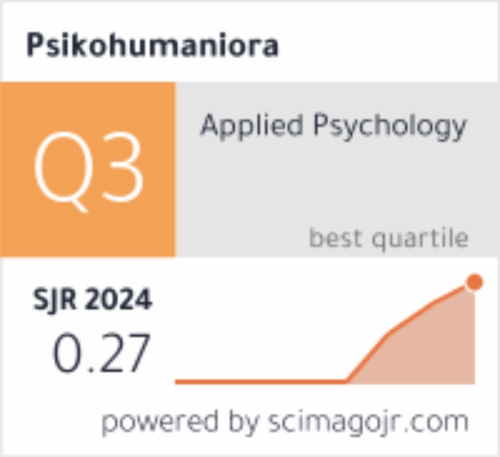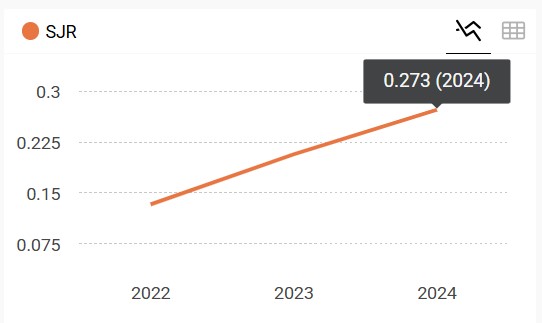Efektivitas Pelatihan Empati dalam Mengurangi Konflik Perkawinan pada Pasangan Suami Istri yang Berada pada Tahun Awal Pernikahan
DOI:
https://doi.org/10.21580/pjpp.v3i2.2954Abstract
A conflict in marriage is something that cannot be avoided but must be faced. For this reason, in an effort to reduce or resolve a conflict that occurs, a couple of husband and wife must have effective communication. It includes showing of empathy, which requires the ability of husband and wife to listen to their partners attentively and be willing to receive messages from each other. This study aimed to examine the effectiveness of empathy training to reduce conflict in married couples in their early years of marriage. Empathy training was developed based on 4 empathy techniques, namely self-empathy, accepting others, accurate listening, and perspective taking. Empathy training was conducted on 14 couples who lived in Banda Aceh and Aceh Besar. They were selected using purposive sampling technique. The study used between group/pretest-posttest control group design and the data were collected with marital conflict scale. The results of data analysis showed that empathy training was effective to reduce marital conflict in married couples in the early years of marriageDownloads
References
Badan Pusat Statistik. (2017). Nikah, talak dan cerai, serta rujuk 2012-2015. Jakarta: Badan Pusat Statistik.
Beck, J. S. (2011). Cognitive behavior therapy: Basic and Beyond (2nd ed.). New York, London: The Guilford Press.
Bernard, M. E., Ellis, A., & Terjesen, M. (2006). Rational-emotive behavioral approaches to childhood disorders: History, theory, practice and research. In M. E. Bernard & A. Ellis (Eds.), Rational Emotive Behavioral Approaches to Childhood Disorders (pp. 3–84). Boston: Kluwer Academic Publishers. https://doi.org/10.1007/0-387-26375-6_1
Brigham, J. C. (1991). Social psychology (2nd ed.). New York: Harper Collins Publishers. Retrieved from https://www.worldcat.org/title/social-psychology/oclc/750972996
Corey, G. (2003). Teori dan praktek konseling & psikoterapi. (E. Koeswara, Terj.). Bandung: Refika Aditama.
Dewi, E. M. P., & Basti. (2008). Konflik perkawinan dan model penyelesaian konflik pada pasangan suami istri. Jurnal Psikologi, 2(No.1), 42–51.
Dewi, N. R., & Sudhana, H. (2013). Hubungan antara komunikasi interpersonal pasutri dengan keharmonisan dalam pernikahan. Jurnal Psikologi Udayana, 1(1), 22–31.
Feeney, J. A., & Karantzas, G. C. (2017). Couple conflict: Insights from an attachment perspective. Current Opinion in Psychology, 13, 60–64. https://doi.org/10.1016/j.copsyc.2016.04.017
Field, A., & Hole, G. j. (2003). How to design and report experiments. London, Thousand Oaks, Calif: Sage Publication Inc.
Ghozali, I. (2006). Aplikasi analisis multivariate dengan program SPSS. Semarang: Badan Penerbit Universitas Diponegoro.
Johnson, M. D., Horne, R. M., Hardy, N. R., & Anderson, J. R. (2018). Temporality of couple conflict and relationship perceptions. Journal of Family Psychology, 32(4), 445–455. https://doi.org/10.1037/fam0000398
Kouros, C. D., & Papp, L. M. (2018). Couples’ Perceptions of Each Other’s Daily Affect: Empathic Accuracy, Assumed Similarity, and Indirect Accuracy. Family Process. https://doi.org/10.1111/famp.12344
Mahkamah Syar’iyah Aceh. (2017). Data perceraian di Aceh 2017. Banda Aceh: Mahkamah Syar’iyah Aceh.
Miga, E. M., Gdula, J. A., & Allen, J. P. (2012). Fighting Fair: Adaptive Marital Conflict Strategies as Predictors of Future Adolescent Peer and Romantic Relationship Quality. Social Development, 21(3), 443–460. https://doi.org/10.1111/j.1467-9507.2011.00636.x
Muhyiddin, & Yulianto, A. (2018). Ratusan ribu kasus perceraian terjadi dalam setahun. Retrieved from https://www.republika.co.id/berita/dunia-islam/islam-nusantara/18/01/21/p2w4v9396-ratusan-ribu-kasus-perceraian-terjadi-dalam-setahun
Myers, A., & Hansen, C. H. (2011). Experimental psychology. Belmont, CA: Wadsworth Publishing.
Pahlavan, M., Mahdiraji, M. A., Ahmadi, E. A. Y., Asadi, M., & Ahmadi, R. A. A. Y. (2017). A sociological study on the effect of the virtual network (telegram) on emotional divorce among young couples (A case study of Babol Payam Noor Center). Sociological Studies of Youth, 8(25), 71–80. Retrieved from http://ssyj.baboliau.ac.ir/article_530804.html
Ridzal, A. R. S. (2017). Rancangan pelatihan empati terhadap kemampuan berkomunikasi intim pasangan suami istri. Schema: Journal of Psychological Research, 3(1), 69–78. https://doi.org/10.1134/S1995082911030114
Rutsch, E. (2013). Increasing empathy: Manual empathy training. Washington DC.: The Center for Building a Culture of Empathy and Compassion. Retrieved from http://cultureofempathy.com/References/Experts/Others/Files/Marieke-Kingma-Empathy-Training-Manual.pdf
Şahin, M. (2012). An investigation into the efficiency of empathy training program on preventing bullying in primary schools. Children and Youth Services Review, 34(7), 1325–1330. https://doi.org/10.1016/j.childyouth.2012.03.013
Sari, A. N., & Fauziah, N. (2016). Hubungan antara empati dengan kepuasan pernikahan pada suami yang memiliki istri bekerja. Jurnal Empati, 5(4), 667–672. Retrieved from https://ejournal3.undip.ac.id/index.php/empati/article/view/15432
Sears, D. O., Freedman, J. L., & Peplau, L. A. (1999). Psikologi sosial. (M. Adryanto & S. Soekrisno, Eds.). Jakarta: Erlangga.
Silverman, M. J. (2014). Effects of music therapy on drug avoidance self-efficacy in patients on a detoxification unit: A three-group randomized effectiveness study. Journal of Addictions Nursing, 25(4), 172–181. https://doi.org/10.1097/JAN.0000000000000047
Wahyuni, P. (2017). Efektivitas empathy training untuk meningkatkan empathy pada remaja awal pelaku bullying. Medan: Universitas Sumatera Utara.
Walgito, B. (2000). Bimbingan dan konseling perkawinan. Yogyakarta: Penerbit Andi.
Yıldız, M. A., & Duy, B. (2013). Improving empathy and communication skills of visually impaired early adolescents through a psycho-education program. Educational Sciences: Theory and Practice, 13, 1470–1476.
Downloads
Published
How to Cite
Issue
Section
License
The copyright of the accepted article shall be assigned to the publisher of the journal. The intended copyright includes the right to publish the article in various forms (including reprints). The journal maintains the publishing rights to published articles.
In line with the license, authors and any users (readers and other researchers) are allowed to share and adapt the material only for non-commercial purposes. In addition, the material must be given appropriate credit, provided with a link to the license, and indicated if changes were made. If authors remix, transform, or build upon the material, authors must distribute their contributions under the same license as the original.




